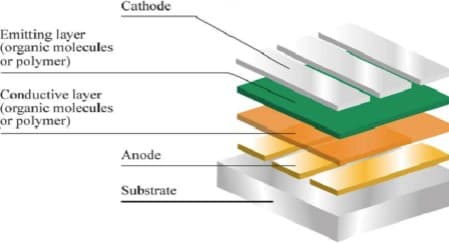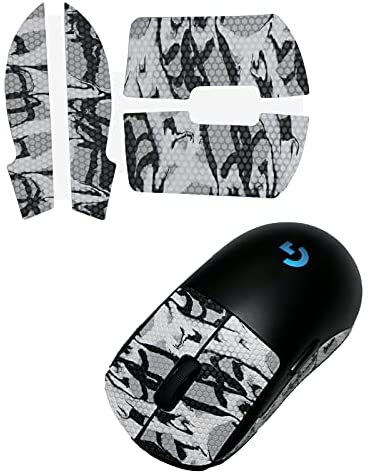By Brian Westenhaus – Apr 03, 2024, 1:00 PM CDT
- Researchers at the University of St. Andrews have proposed a new approach to designing efficient light-emitting materials for OLEDs.
- The new approach could help overcome the problem of efficiency roll-off, which reduces the efficiency of OLEDs at high brightness levels.
- The researchers’ guidelines will help OLED researchers develop materials that maintain high efficiency at high brightness, enabling the latest materials to be used for applications in displays, lighting, and medicine.

Light-emitting materials are used in organic light-emitting diodes (OLEDs) that are now found in the majority of mobile phone displays and smartwatches, and some televisions and automotive lighting.

Graphic image of the basic structure of an Organic LED. Image Credit Semantic Scholar.
The latest generation of emitter materials under development produce OLEDs that have high efficiency at low brightness, but suffer reduced efficiency as the brightness is increased to the levels required for lighting and outdoor applications.
This problem is known as ‘efficiency roll-off’.
The researchers have identified the combination of features of materials required to overcome this problem.
Guidelines developed by the team of researchers, led by Professor Ifor Samuel and Professor Eli Zysman-Colman, will help OLED researchers develop materials that maintain high efficiency at high brightness, enabling the latest materials to be used for applications in displays, lighting and medicine.
Commenting on the research, Professor Zysman-Colman explained that the findings “provide clearer insight into the link between the properties of the emitter material and the performance of the OLED.”
Professor Samuel said, “Our new approach to this problem will help to develop bright, efficient and colorful OLEDs that use less power.”
**
Its likely everyone will enjoy a better lower cost LED whether it’s in a TV or computer monitor or a cell phone. With the paper picked by Nature, the probability that enough attention will be given that there might be some industrial attention is pretty good.
More efficiency and better light output is always welcome.
By Brian Westenhaus via New Energy and Fuel
More Top Reads From Oilprice.com:
- Xiaomi’s EV Launch Shakes Up China’s Auto Industry
- Gold Prices Have Surged 23.3% in the Last Six Months
- China’s Iron and Steel Association Calls for Production Cut to Stabilize Market




